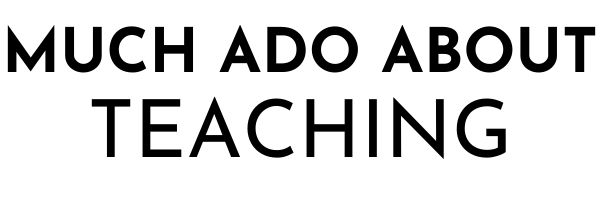Erik Powell is in his 29th year of teaching, most of them at Ferris High School in Spokane, WA. He loves working with passionate, intelligent, and innovative colleagues who are committed to helping students each day. Erik teaches English 10 and AP English Literature & Composition and has coached soccer, basketball, and track. In addition to his work at Ferris, Erik has served as a member of ASCD’s Understanding by Design cadre, helping schools across the country implement backward design in their classes. He has also worked on several College Board committees over the years, mostly having to do with AP English. Outside of school, Erik loves spending time with his family, traveling, reading, and enjoying life.
1. Walk us through a great lesson from last week.
Karissa Jacobson and I co-teach three sections of 10th-grade English at Ferris High School. We work with students of all abilities and have a blast differentiating to meet their needs and engage them in meaningful work.
One day just as the bell rang to start second period, a student asked about the plural of “octopus.” It set the tone for the class as we went off script—way off script—to explore etymology, listen to the questions of students, and encourage their inquiry. Our exploration of words led to researching family names and creating family crests.
The work we did that day was more engaging and productive than the lesson we’d designed. The time we may have “lost” on scripted work was more than made up for with authentic engagement and problem-posing. We laughed a lot, got to know our students better, helped them learn some things of genuine interest, and actually applied many of the skills and concepts we’d been working on all semester.

2. What’s the last great poem or short story that you read?
I love the poem “A Father Mumbles,” by Tod Marshall and connect with it not only as a father but also as a teacher.

3. How does a teacher know if they are succeeding?
Ha! Great question.
I’m not sure it has to do with grades & test scores as much as it does with seeing students grow in confidence, take risks, and engage in their learning community. When students come out of their shells, feel safe, and share their ideas and lives . . . when students come back to visit after graduation or at least send an email every so often . . . that’s the good stuff.
4. What’s one thing that we, as teachers, could be doing better?
Just one? Oof.
Listen to our students.
And laugh with them.
And create learning experiences that are engaging, challenging, and purposeful (even if we sometimes put those learning experiences on hold to explore the word history of “octopus”).
I think that was three things instead of one!
5. What makes your classroom culture unique?
Each class is full of 25-30 students with unique stories, experiences, and talents. I love seeing how those unique individuals come together to create their own culture with their own memories, jokes, and educational experiences.
No matter what subject I teach—for me, it’s English and sometimes French—or what grade level—co-taught 10th grade or AP Lit & Comp—I am ultimately teaching students to manage their time better, develop their inquiry skills, and grow as members of their community. Structuring class with these things in mind helps prioritize our work together and allows for each class to shape themselves as the year progresses.
6. What is the one novel you can’t imagine removing from your curriculum? Why?
I’m not sure I could honestly name one novel that I’d consider indispensable for class anymore. The longer I teach, the more I focus on skills and less on artifacts. I imagine I will always have my favorites such as Ralph Ellison’s Invisible Man, but I also enjoy teaching analysis through new books such as Interior Chinatown by Charles Yu or The Moor’s Account by Laila Lalami.
7. Describe your work/life balance.
Hahahahaha!
8. Tell us about a change – practical or philosophical, big or small – that you’ve made since you’ve started teaching.
I think I’ve learned to take myself a bit less seriously while taking my work more seriously. I’ve learned the importance of listening, laughing, understanding, encouraging, and putting students as much as possible in the driver’s seat of their own learning.
That doesn’t mean I don’t prepare for classes or work tirelessly as a designer of learning experiences; it just means that empowering students to know how to learn is far more important than giving them information that I think is important.









One comment
Denise Trach
I love this. And I love this idea! We should shout out our teachers! Especially now. Thank for this great interview with Erik; I really enjoyed reading it.